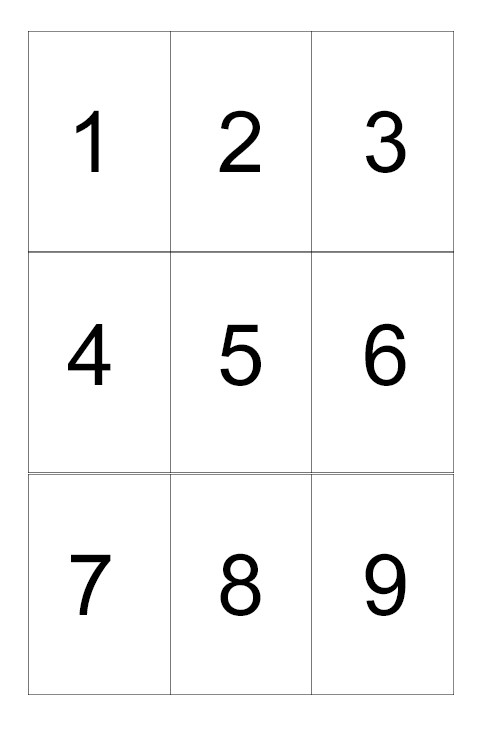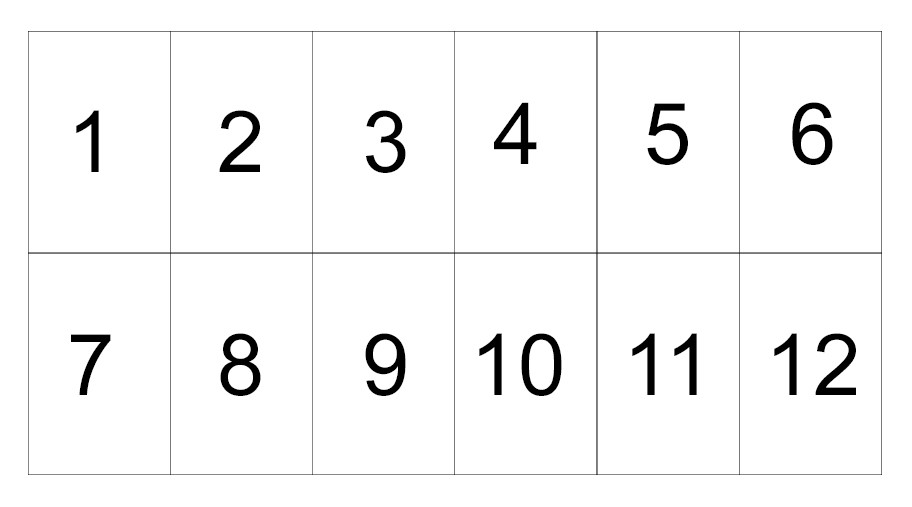In the following post, gallery artist Mabry Campbell discusses panoramas. This is a detailed excerpt from his original Still in the Studio post.
Over the past 10 months, I have focused my attention on improving my proficiency of photographic panoramas.
Panoramas are grand in scale and visual impact. While the traditional formula of lining up several photographs in a single row, left to right, works, there are more creative approaches. Panoramas can be an assemblage of columns and rows in varying aspect ratios. See the example below of a layout for a nine photo panorama in three rows and three columns.
Several unique attributes arise when photographs are combined in this way. First, the impact of selective focus is heightened. Or said in another way, the blur in the photograph is increased in a smooth transition, particularly when working with perspective control.
So, when you focus on the horizon and lock that focus across all nine photographs, the top row, photographs 1-3, will be of the sky and will be in focus. Photographs 4-6 will be of the horizon and middle foreground, with the horizon in focus but the middle foreground beginning to blur out. Photographs 7-9 will be of the extreme foreground and be entirely blurry. When you are focused on infinity but shooting a distance of five feet, everything is out of focus, and that’s great. Selective focus across the panorama has been achieved. See below for the 9 photographs that make up the final photograph.
 RR 2810 from Marfa No. 3 with grid
RR 2810 from Marfa No. 3 with grid
Second, compression from the foreground to the background can be hugely increased with the use of telephoto lenses, creating a look that is unobtainable with a single photograph. Although the coverage of the assembled panorama may seem to be taken with a 35mm or 50mm lens, the individual photographs in the panorama were taken using 200mm or 400mm lenses. The compression achieved with a 400mm lens is not obtainable with a 50mm lens, and therein lies the unique look of a panorama created in this way.

Another panorama format I utilize is made up of two long rows of approximately 6 to 30 photographs. Although this has a traditional panorama final aspect ratio, the selective focus and image compression techniques are still achievable. In this example, Sierra del Carmens No. 5 from Big Bend National Park, I used approximately 18 photographs in the assemblage. The effects of compression are extremely evident in this panorama. The distance from the foreground to the background here is around 20 miles, however compression makes it appear to be far less, almost making distance impossible to judge.

Sierra del Carmens No. 5 with grid
To read Mabry Campbell's original Still in the Studio post, click here. To learn more about Mabry Campbell and see more of his work, please visit his Artist Page.
In the following post, gallery artist Mabry Campbell discusses panoramas. This is a detailed excerpt from his original Still in the Studio post.
Over the past 10 months, I have focused my attention on improving my proficiency of photographic panoramas.
Panoramas are grand in scale and visual impact. While the traditional formula of lining up several photographs in a single row, left to right, works, there are more creative approaches. Panoramas can be an assemblage of columns and rows in varying aspect ratios. See the example below of a layout for a nine photo panorama in three rows and three columns.
Several unique attributes arise when photographs are combined in this way. First, the impact of selective focus is heightened. Or said in another way, the blur in the photograph is increased in a smooth transition, particularly when working with perspective control.
So, when you focus on the horizon and lock that focus across all nine photographs, the top row, photographs 1-3, will be of the sky and will be in focus. Photographs 4-6 will be of the horizon and middle foreground, with the horizon in focus but the middle foreground beginning to blur out. Photographs 7-9 will be of the extreme foreground and be entirely blurry. When you are focused on infinity but shooting a distance of five feet, everything is out of focus, and that’s great. Selective focus across the panorama has been achieved. See below for the 9 photographs that make up the final photograph.
 RR 2810 from Marfa No. 3 with grid
RR 2810 from Marfa No. 3 with grid
Second, compression from the foreground to the background can be hugely increased with the use of telephoto lenses, creating a look that is unobtainable with a single photograph. Although the coverage of the assembled panorama may seem to be taken with a 35mm or 50mm lens, the individual photographs in the panorama were taken using 200mm or 400mm lenses. The compression achieved with a 400mm lens is not obtainable with a 50mm lens, and therein lies the unique look of a panorama created in this way.

Another panorama format I utilize is made up of two long rows of approximately 6 to 30 photographs. Although this has a traditional panorama final aspect ratio, the selective focus and image compression techniques are still achievable. In this example, Sierra del Carmens No. 5 from Big Bend National Park, I used approximately 18 photographs in the assemblage. The effects of compression are extremely evident in this panorama. The distance from the foreground to the background here is around 20 miles, however compression makes it appear to be far less, almost making distance impossible to judge.

Sierra del Carmens No. 5 with grid


Comments (0)
Add a Comment